代码处理iOS的横竖屏旋转
一、监听屏幕旋转方向
在处理iOS横竖屏时,经常会和UIDeviceOrientation、UIInterfaceOrientation和UIInterfaceOrientationMask这三个枚举类型打交道,它们从不同角度描述了屏幕旋转方向。
1、UIDeviceOrientation:设备方向
iOS的设备方向是通过iOS的加速计来获取的。
1)iOS定义了以下七种设备方向
- typedef NS_ENUM(NSInteger, UIDeviceOrientation) {
- UIDeviceOrientationUnknown, // 未知方向,可能是设备(屏幕)斜置
- UIDeviceOrientationPortrait, // 设备(屏幕)直立
- UIDeviceOrientationPortraitUpsideDown, // 设备(屏幕)直立,上下顛倒
- UIDeviceOrientationLandscapeLeft, // 设备(屏幕)向左横置
- UIDeviceOrientationLandscapeRight, // 设备(屏幕)向右橫置
- UIDeviceOrientationFaceUp, // 设备(屏幕)朝上平躺
- UIDeviceOrientationFaceDown // 设备(屏幕)朝下平躺
- };
说明:UIDeviceOrientation参考home键方向,如:home方向在右,设备(屏幕)方向向左(UIDeviceOrientationLandscapeLeft)
2)读取设备方向
UIDevice单例代表当前的设备。从这个单例中可以获得的信息设备,如设备方向orientation。
- UIDeviceOrientation deviceOrientation = [UIDevice currentDevice].orientation;
3)监听、处理和移除 设备方向改变的通知
当设备方向变化时候,发出UIDeviceOrientationDidChangeNotification通知;注册监听该通知,可以针对不同的设备方向处理视图展示。
- //开启和监听 设备旋转的通知(不开启的话,设备方向一直是UIInterfaceOrientationUnknown)
- if (![UIDevice currentDevice].generatesDeviceOrientationNotifications) {
- [[UIDevice currentDevice] beginGeneratingDeviceOrientationNotifications];
- }
- [[NSNotificationCenter defaultCenter]addObserver:self selector:@selector(handleDeviceOrientationChange:)
- name:UIDeviceOrientationDidChangeNotification object:nil];
- //设备方向改变的处理
- - (void)handleDeviceOrientationChange:(NSNotification *)notification{
- UIDeviceOrientation deviceOrientation = [UIDevice currentDevice].orientation;
- switch (ddeviceOrientation) {
- case UIDeviceOrientationFaceUp:
- NSLog(@"屏幕朝上平躺");
- break;
- case UIDeviceOrientationFaceDown:
- NSLog(@"屏幕朝下平躺");
- break;
- case UIDeviceOrientationUnknown:
- NSLog(@"未知方向");
- break;
- case UIDeviceOrientationLandscapeLeft:
- NSLog(@"屏幕向左横置");
- break;
- case UIDeviceOrientationLandscapeRight:
- NSLog(@"屏幕向右橫置");
- break;
- case UIDeviceOrientationPortrait:
- NSLog(@"屏幕直立");
- break;
- case UIDeviceOrientationPortraitUpsideDown:
- NSLog(@"屏幕直立,上下顛倒");
- break;
- default:
- NSLog(@"无法辨识");
- break;
- }
- }
- //最后在dealloc中移除通知 和结束设备旋转的通知
- - (void)dealloc{
- //...
- [[NSNotificationCenter defaultCenter]removeObserver:self];
- [[UIDevice currentDevice]endGeneratingDeviceOrientationNotifications];
说明:手机锁定竖屏后,UIDeviceOrientationDidChangeNotification通知就失效了。
2、UIInterfaceOrientation:界面方向
界面方向是反应iOS中界面的方向,它和Home按钮的方向是一致的。
1)iOS定义了以下五种界面方向
- typedef NS_ENUM(NSInteger, UIInterfaceOrientation) {
- UIInterfaceOrientationUnknown = UIDeviceOrientationUnknown, //未知方向
- UIInterfaceOrientationPortrait = UIDeviceOrientationPortrait, //界面直立
- UIInterfaceOrientationPortraitUpsideDown = UIDeviceOrientationPortraitUpsideDown, //界面直立,上下颠倒
- UIInterfaceOrientationLandscapeLeft = UIDeviceOrientationLandscapeRight, //界面朝左
- UIInterfaceOrientationLandscapeRight = UIDeviceOrientationLandscapeLeft //界面朝右
- } __TVOS_PROHIBITED;
说明:从定义可知,界面方向和设别方向有对应关系,如界面的竖直方向就是 设备的竖直方向:UIInterfaceOrientationUnknown = UIDeviceOrientationUnknown
2)读取界面方向
UIInterfaceOrientation和状态栏有关,通过UIApplication的单例调用statusBarOrientation来获取
- UIInterfaceOrientation interfaceOrientation = [[UIApplication sharedApplication] statusBarOrientation];
3)监听、处理和移除 界面方向改变的通知
当界面方向变化时候,先后发出UIApplicationWillChangeStatusBarOrientationNotification和UIApplicationDidChangeStatusBarOrientationNotification通知;注册监听这两个通知,可以针对不同的界面方向处理视图展示。
- //以监听UIApplicationDidChangeStatusBarOrientationNotification通知为例
- [[NSNotificationCenter defaultCenter]addObserver:self selector:@selector(handleStatusBarOrientationChange:)
- name:UIApplicationDidChangeStatusBarOrientationNotification object:nil];
- //界面方向改变的处理
- - (void)handleStatusBarOrientationChange: (NSNotification *)notification{
- UIInterfaceOrientation interfaceOrientation = [[UIApplication sharedApplication] statusBarOrientation];
- switch (interfaceOrientation) {
- case UIInterfaceOrientationUnknown:
- NSLog(@"未知方向");
- break;
- case UIInterfaceOrientationPortrait:
- NSLog(@"界面直立");
- break;
- case UIInterfaceOrientationPortraitUpsideDown:
- NSLog(@"界面直立,上下颠倒");
- break;
- case UIInterfaceOrientationLandscapeLeft:
- NSLog(@"界面朝左");
- break;
- case UIInterfaceOrientationLandscapeRight:
- NSLog(@"界面朝右");
- break;
- default:
- break;
- }
- }
- //最后在dealloc中移除通知
- - (void)dealloc{
- //...
- [[NSNotificationCenter defaultCenter]removeObserver:self];
- [[UIDevice currentDevice]endGeneratingDeviceOrientationNotifications];
- }
说明:手机锁定竖屏后,UIApplicationWillChangeStatusBarOrientationNotification和UIApplicationDidChangeStatusBarOrientationNotification通知也失效了。
3、UIInterfaceOrientationMask
UIInterfaceOrientationMask是为了集成多种UIInterfaceOrientation而定义的类型,和ViewController相关,一共有7种
1)iOS中的UIInterfaceOrientationMask定义
- typedef NS_OPTIONS(NSUInteger, UIInterfaceOrientationMask) {
- UIInterfaceOrientationMaskPortrait = (1 << UIInterfaceOrientationPortrait),
- UIInterfaceOrientationMaskLandscapeLeft = (1 << UIInterfaceOrientationLandscapeLeft),
- UIInterfaceOrientationMaskLandscapeRight = (1 << UIInterfaceOrientationLandscapeRight),
- UIInterfaceOrientationMaskPortraitUpsideDown = (1 << UIInterfaceOrientationPortraitUpsideDown),
- UIInterfaceOrientationMaskLandscape = (UIInterfaceOrientationMaskLandscapeLeft | UIInterfaceOrientationMaskLandscapeRight),
- UIInterfaceOrientationMaskAll = (UIInterfaceOrientationMaskPortrait | UIInterfaceOrientationMaskLandscapeLeft | UIInterfaceOrientationMaskLandscapeRight | UIInterfaceOrientationMaskPortraitUpsideDown),
- UIInterfaceOrientationMaskAllButUpsideDown = (UIInterfaceOrientationMaskPortrait | UIInterfaceOrientationMaskLandscapeLeft | UIInterfaceOrientationMaskLandscapeRight),
- } __TVOS_PROHIBITED;
2)UIInterfaceOrientationMask的使用
在ViewController可以重写- (UIInterfaceOrientationMask)supportedInterfaceOrientations方法返回类型,来决定UIViewController可以支持哪些界面方向。
- //支持界面直立
- - (UIInterfaceOrientationMask)supportedInterfaceOrientations{
- return UIInterfaceOrientationMaskPortrait;
- }
总结:UIDeviceOrientation(设备方向)和UIInterfaceOrientation(屏幕方向)是两个不同的概念。前者代表了设备的一种状态,而后者是屏幕为了应对不同的设备状态,做出的用户界面上的响应。在iOS设备旋转时,由UIKit接收到旋转事件,然后通过AppDelegate通知当前程序的UIWindow对象,UIWindow对象通知它的rootViewController,如果该rootViewController支持旋转后的屏幕方向,完成旋转,否则不旋转;弹出的ViewController也是如此处理。
二、视图控制器中旋转方向的设置
0、关于禁止横屏的操作(不建议)
比较常规的方法有两种。
方法1:在项目的General–>Deployment Info–>Device Orientation中,只勾选Portrait(竖屏)
勾选Portrait.png
方法2:Device Orientation默认设置,在Appdelegate中实现supportedInterfaceOrientationsForWindow:只返回UIInterfaceOrientationMaskPortraitt(竖屏)
- - (NSUInteger)application:(UIApplication *)application supportedInterfaceOrientationsForWindow:(UIWindow *)window {
- return UIInterfaceOrientationMaskPortrait;
- }
说明:极少的APP中所有界面都是竖屏的,因为总会有界面需要支持横屏,如视频播放页。所以不建议设置禁止APP页面横屏。
下面介绍如何让项目中的 视图控制器中旋转方向的设置
1、APP支持多个方向
APP支持多个方向.png
说明:如此,APP支持横屏和竖屏了,但是具体视图控制器支持的页面方向还需要进一步处理。由于不支持竖屏颠倒(Upside Down),即使设备上下颠倒,通过API也不会获得设备、屏幕上下颠倒方向的。
2、支持ViewController屏幕方向设置
1)关键函数
视图控制器支持的界面方向主要由以下三个函数控制
- //是否自动旋转,返回YES可以自动旋转,返回NO禁止旋转
- - (BOOL)shouldAutorotate NS_AVAILABLE_IOS(6_0) __TVOS_PROHIBITED;
- //返回支持的方向
- - (UIInterfaceOrientationMask)supportedInterfaceOrientations NS_AVAILABLE_IOS(6_0) __TVOS_PROHIBITED;
- //由模态推出的视图控制器 优先支持的屏幕方向
- - (UIInterfaceOrientation)preferredInterfaceOrientationForPresentation NS_AVAILABLE_IOS(6_0) __TVOS_PROHIBITED;
2) QSBaseViewController设置
- //QSBaseViewController.h
- @interface QSBaseController : UIViewController
- @end
- //QSBaseViewController.m
- @implementation QSBaseController
- //#pragma mark - 控制屏幕旋转方法
- //是否自动旋转,返回YES可以自动旋转,返回NO禁止旋转
- - (BOOL)shouldAutorotate{
- return NO;
- }
- //返回支持的方向
- - (UIInterfaceOrientationMask)supportedInterfaceOrientations{
- return UIInterfaceOrientationMaskPortrait;
- }
- //由模态推出的视图控制器 优先支持的屏幕方向
- - (UIInterfaceOrientation)preferredInterfaceOrientationForPresentation{
- return UIInterfaceOrientationPortrait;
- }
- @end
说明1:QSBaseViewController默认不支持旋转,只支持 界面竖直方向,项目中的Controller都继承自QSBaseViewController,可以通过重写这三个方法来让Controller支持除竖屏之外的方向或旋转。
3) 在QSNavigationController设置
目标:通过QSNavigationController来push视图控制器时,把支持屏幕旋转的设置交给最新push进来([self.viewControllers lastObject])的viewController来设置。
- //QSNavigationController.h
- @interface QSNavigationController : UINavigationController
- @end
- //QSNavigationController.m
- @implementation QSNavigationController
- #pragma mark - 控制屏幕旋转方法
- - (BOOL)shouldAutorotate{
- return [[self.viewControllers lastObject]shouldAutorotate];
- }
- - (UIInterfaceOrientationMask)supportedInterfaceOrientations{
- return [[self.viewControllers lastObject]supportedInterfaceOrientations];
- }
- - (UIInterfaceOrientation)preferredInterfaceOrientationForPresentation{
- return [[self.viewControllers lastObject] preferredInterfaceOrientationForPresentation];
- }
- @end
4) 在QSTabBarController设置
目标:TabBarController通常作为整个程序的rootViewController,UITabBar上面显示的每一个Tab都对应着一个ViewController;每点击一个Tab,出现的ViewController(self.selectedViewController)对屏幕旋转和支持方向的设置 交给其自身去控制。
- //QSTabBarController.h
- @interface QSTabBarController : UITabBarController
- @end
- //QSTabBarController.m
- @implementation QSTabBarController
- #pragma mark - 控制屏幕旋转方法
- - (BOOL)shouldAutorotate{
- return [self.selectedViewController shouldAutorotate];
- }
- - (UIInterfaceOrientationMask)supportedInterfaceOrientations{
- return [self.selectedViewController supportedInterfaceOrientations];
- }
- - (UIInterfaceOrientation)preferredInterfaceOrientationForPresentation{
- return [self.selectedViewController preferredInterfaceOrientationForPresentation];
- }
- @end
三、屏幕旋转方向下的视图处理
1、屏幕旋转时,建议监听UIApplicationDidChangeStatusBarOrientationNotification
原因1:supportedInterfaceOrientations方法中最终返回的是 多个界面方向。
原因2(最重要的原因):我们真正要处理的是页面方向发生旋转UI的变化。而在设备的物理方向发生旋转的时候,如果此时当前控制器的页面并没有旋转,我们这时改变UI布局,可能就发生问题了。
2、屏幕的宽高处理
1)在iOS 8之后,当屏幕旋转的时候,[[UIScreen mainScreen] bounds]也发生了改变。如横屏时候的屏幕宽度 其实是竖屏的时候屏幕的高度。
2)我们处理视图布局时候,如果使用到屏幕的宽高,不要直接使用SCREEN_HEIGHT和SCREEN_WIDTH,而使用SCREEN_MIN和SCREEN_MAX
- #define SCREEN_HEIGHT CGRectGetHeight([[UIScreen mainScreen] bounds])
- #define SCREEN_WIDTH CGRectGetWidth([[UIScreen mainScreen] bounds])
- #define SCREEN_MIN MIN(SCREEN_HEIGHT,SCREEN_WIDTH)
- #define SCREEN_MAX MAX(SCREEN_HEIGHT,SCREEN_WIDTH)
说明:竖屏时候,宽是SCREEN_MIN,高是SCREEN_MAX;横屏时候,宽是SCREEN_MAX,高是SCREEN_MIN。
3、屏幕旋转下处理Demo
- //监听UIApplicationDidChangeStatusBarOrientationNotification的处理
- - (void)handleStatusBarOrientationChange: (NSNotification *)notification{
- UIInterfaceOrientation interfaceOrientation = [[UIApplication sharedApplication] statusBarOrientation];
- BOOL isLandscape = NO;
- switch (interfaceOrientation) {
- case UIInterfaceOrientationUnknown:
- NSLog(@"未知方向");
- break;
- case UIInterfaceOrientationPortrait:
- case UIInterfaceOrientationPortraitUpsideDown:
- isLandscape = NO;
- break;
- case UIInterfaceOrientationLandscapeLeft:
- case UIInterfaceOrientationLandscapeRight:
- isLandscape = YES;
- break;
- default:
- break;
- }
- if (isLandscape) {
- self.tableView.frame = CGRectMake(0, 0, SCREEN_MAX, SCREEN_MIN - 44);
- }else{
- self.tableView.frame = CGRectMake(0, 0, SCREEN_MIN, SCREEN_MAX - 64);
- }
- [self.tableView reloadData];
- }
说明:当然也可以选择使用Masonry这样优秀的AutoLayout布局第三方库来处理,storyBoard来布局次之。
4、屏幕旋转下处理Demo效果图
竖屏下效果.png
横屏下效果.png
5、屏幕旋转处理的建议
1)旋转前后,view当前显示的位置尽量不变
2)旋转过程中,暂时界面操作的响应
3)视图中有tableview的话,旋转后,强制 [tableview reloadData],保证在方向变化以后,新的row能够充满全屏。
四、强制横屏
APP中某些页面,如视频播放页,一出现就要求横屏。这些横屏页面或模态弹出、或push进来。
1、模态弹出ViewController情况下 强制横屏的设置
- //QSShow3Controller.m
- - (BOOL)shouldAutorotate{
- return NO;
- }
- - (UIInterfaceOrientationMask)supportedInterfaceOrientations{
- return UIInterfaceOrientationMaskLandscapeRight;
- }
- - (UIInterfaceOrientation)preferredInterfaceOrientationForPresentation{
- return UIInterfaceOrientationLandscapeRight;
- }
- //模态弹出
- QSShow3Controller *vc = [[QSShow3Controller alloc]init];
- [self presentViewController:vc animated:YES completion:nil];
说明:这种情况比较简单处理。
2、push推入ViewController情况下 强制横屏的设置
- //QSShow4Controller.m
- -(void)viewWillAppear:(BOOL)animated{
- [super viewWillAppear:animated];
- [self setInterfaceOrientation:UIInterfaceOrientationLandscapeRight];
- }
- //强制转屏(这个方法最好放在BaseVController中)
- - (void)setInterfaceOrientation:(UIInterfaceOrientation)orientation{
- if ([[UIDevice currentDevice] respondsToSelector:@selector(setOrientation:)]) {
- SEL selector = NSSelectorFromString(@"setOrientation:");
- NSInvocation *invocation = [NSInvocation invocationWithMethodSignature:[UIDevice instanceMethodSignatureForSelector:selector]];
- [invocation setSelector:selector];
- [invocation setTarget:[UIDevice currentDevice]];
- // 从2开始是因为前两个参数已经被selector和target占用
- [invocation setArgument:&orientation atIndex:2];
- [invocation invoke];
- }
- }
- //必须返回YES
- - (BOOL)shouldAutorotate{
- return YES;
- }
- - (UIInterfaceOrientationMask)supportedInterfaceOrientations{
- return UIInterfaceOrientationMaskLandscapeRight;
- }
- //Push推入
- QSShow4Controller *vc = [[QSShow4Controller alloc]init];
- [self.navigationController pushViewController:vc animated:YES];
说明:苹果不允许直接调用setOrientation方法,否则有被拒的风险;使用NSInvocation对象给[UIDevice currentDevice]发消息,强制改变设备方向,使其页面方向对应改变,这是苹果允许的。
五、其他
1、 APP启动时,手机横屏下,首页UI(该页面只支持竖屏)出错(add by 2017/6/20)
- //设置设置状态栏竖屏
- [[UIApplication sharedApplication]setStatusBarOrientation:UIInterfaceOrientationPortrait];
 关注公众号
关注公众号 低调大师中文资讯倾力打造互联网数据资讯、行业资源、电子商务、移动互联网、网络营销平台。
持续更新报道IT业界、互联网、市场资讯、驱动更新,是最及时权威的产业资讯及硬件资讯报道平台。
转载内容版权归作者及来源网站所有,本站原创内容转载请注明来源。
- 上一篇

浅谈iOS Crash(二)
浅谈iOS Crash(一) 一、僵尸对象(Zombie Objects) 1、概述 僵尸对象:已经被释放掉的对象。一般来说,访问已经释放的对象或向它发消息会引起错误。因为指针指向的内存块认为你无权访问或它无法执行该消息,这时候内核会抛出一个异常( EXC ),表明你不能访问该存储区域(BAD ACCESS)。(EXC_BAD_ACCESS类型错误) 调试解决该类问题一般采用NSZombieEnabled(开启僵尸模式)。 2、使用NSZombieEnabled Xcode提供的NSZombieEnabled,通过生成僵尸对象来替换dealloc的实现,当对象引用计数为0的时候,将需要dealloc的对象转化为僵尸对象。如果之后再给这个僵尸对象发消息,则抛出异常。先选中Product -> Scheme -> Edit Scheme -> Diagnostics -> 勾选Zombie Objects 项,显示如下: 设置NSZombieEnabled.png 然后在Product -> Scheme -> Edit Scheme -> Arg...
- 下一篇

Android彻底组件化方案实践
一、模块化、组件化与插件化 项目发展到一定程度,随着人员的增多,代码越来越臃肿,这时候就必须进行模块化的拆分。在我看来,模块化是一种指导理念,其核心思想就是分而治之、降低耦合。而在 Android 工程中如何实施,目前有两种途径,也是两大流派,一个是组件化,一个是插件化。 提起组件化和插件化的区别,有一个很形象的图: 上面的图看上去比较清晰,其实容易导致一些误解,有下面几个小问题,图中可能说的不太清楚: 组件化是一个整体吗?去了头和胳膊还能存在吗?左图中,似乎组件化是一个有机的整体,需要所有器官都健在才可以存在。而实际上组件化的目标之一就是降低整体(app)与器官(组件)的依赖关系,缺少任何一个器官 app 都是可以存在并正常运行的。 头和胳膊可以单独存在吗?左图也没有说明白,其实答案应该是肯定的。每个器官(组件)可以在补足一些基本功能之后都是可以独立存活的。这个是组件化的第二个目标:组件可以单独运行。 组件化和插件化可以都用右图来表示吗?如果上面两个问题的答案都是 YES 的话,这个问题的答案自然也是 YES。每个组件都可以看成一个单独的整体,可以按需的和其他组件(包括主项目)整合在...
相关文章
文章评论
共有0条评论来说两句吧...
文章二维码
点击排行
推荐阅读
最新文章
- CentOS7编译安装Gcc9.2.0,解决mysql等软件编译问题
- CentOS6,7,8上安装Nginx,支持https2.0的开启
- Linux系统CentOS6、CentOS7手动修改IP地址
- CentOS7编译安装Cmake3.16.3,解决mysql等软件编译问题
- SpringBoot2更换Tomcat为Jetty,小型站点的福音
- SpringBoot2整合Thymeleaf,官方推荐html解决方案
- SpringBoot2整合MyBatis,连接MySql数据库做增删改查操作
- MySQL8.0.19开启GTID主从同步CentOS8
- CentOS8安装Docker,最新的服务器搭配容器使用
- Jdk安装(Linux,MacOS,Windows),包含三大操作系统的最全安装


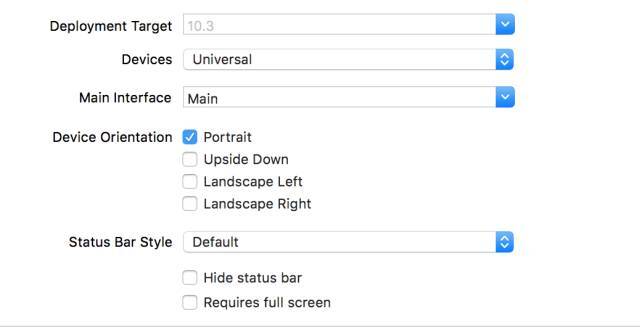
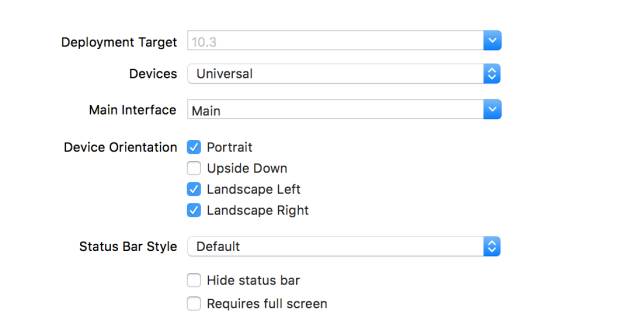

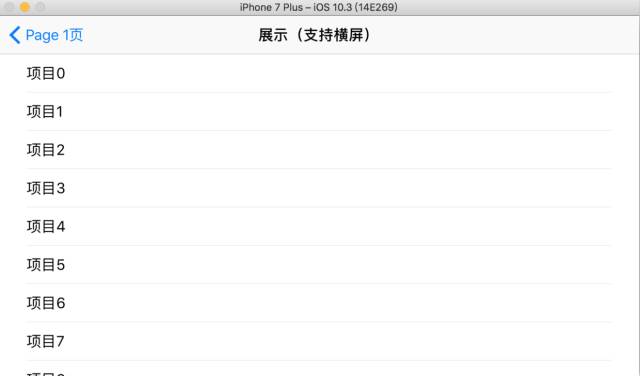
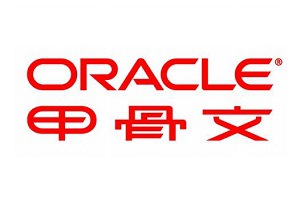
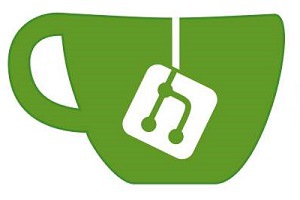
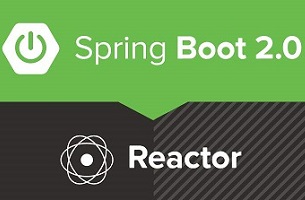

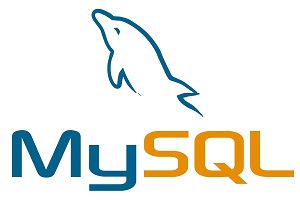
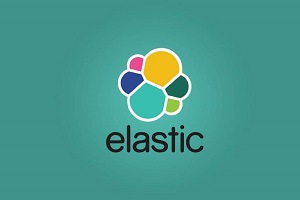
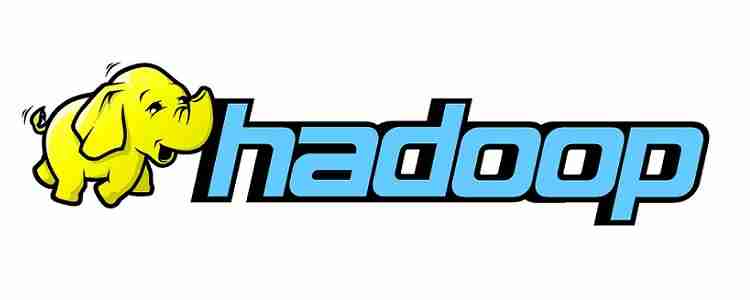
 微信收款码
微信收款码 支付宝收款码
支付宝收款码